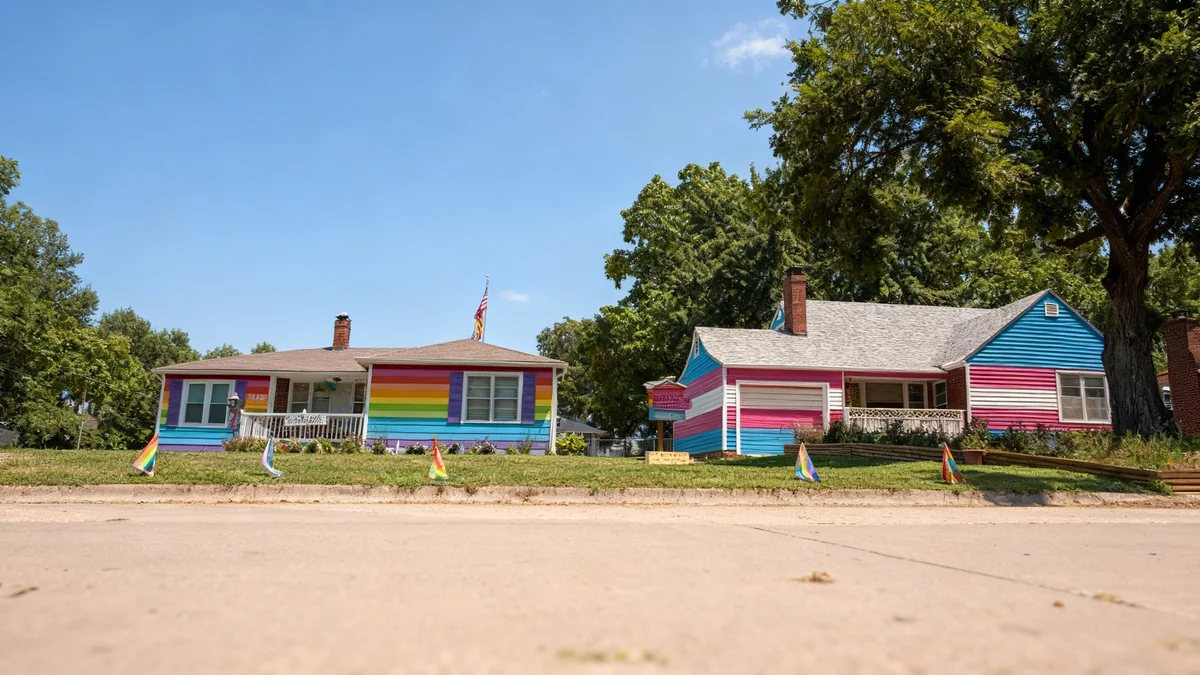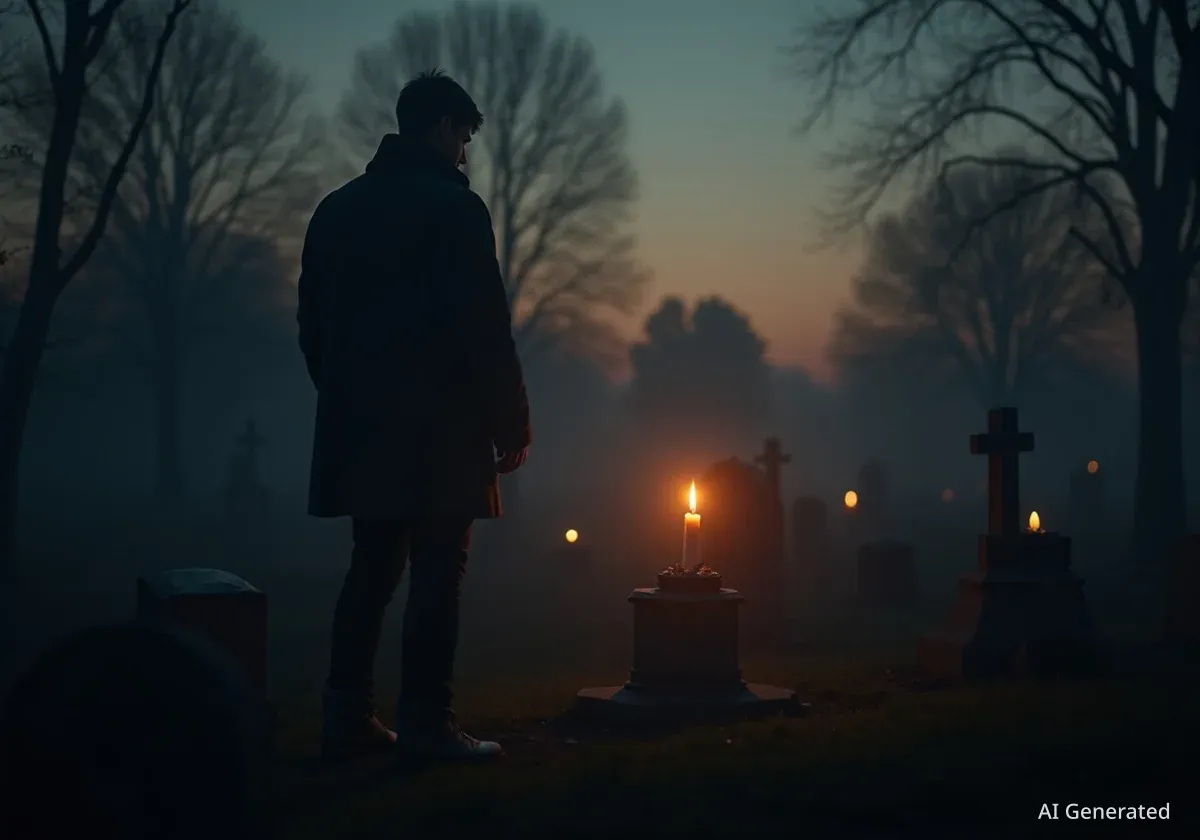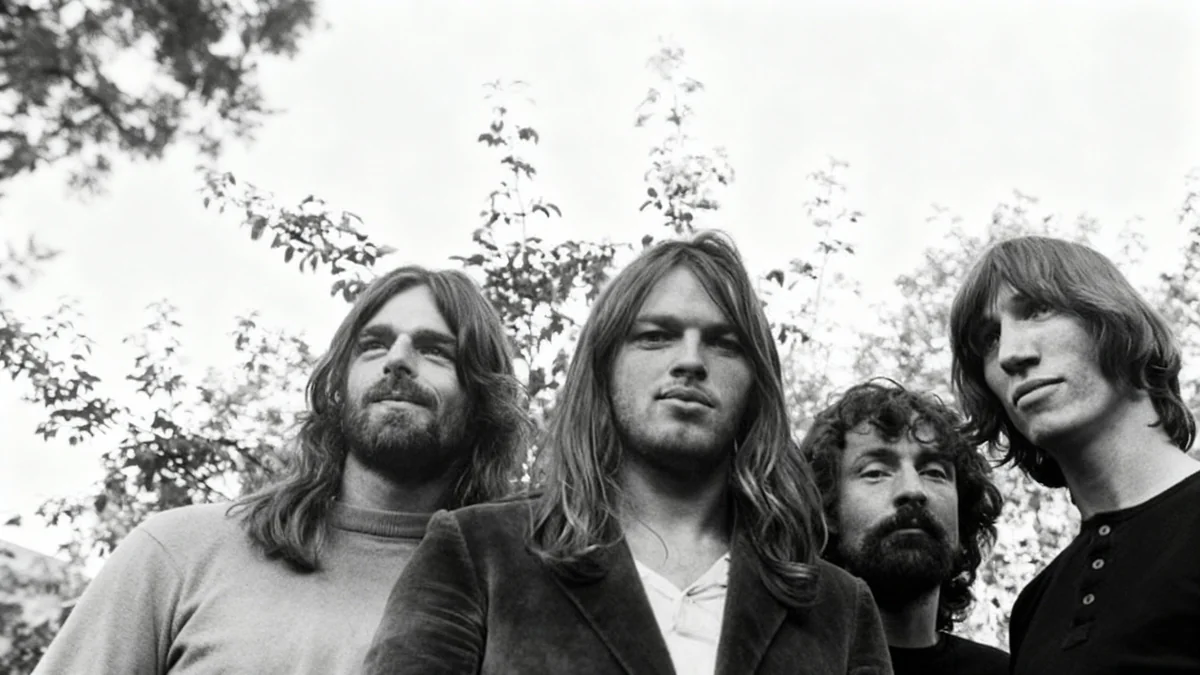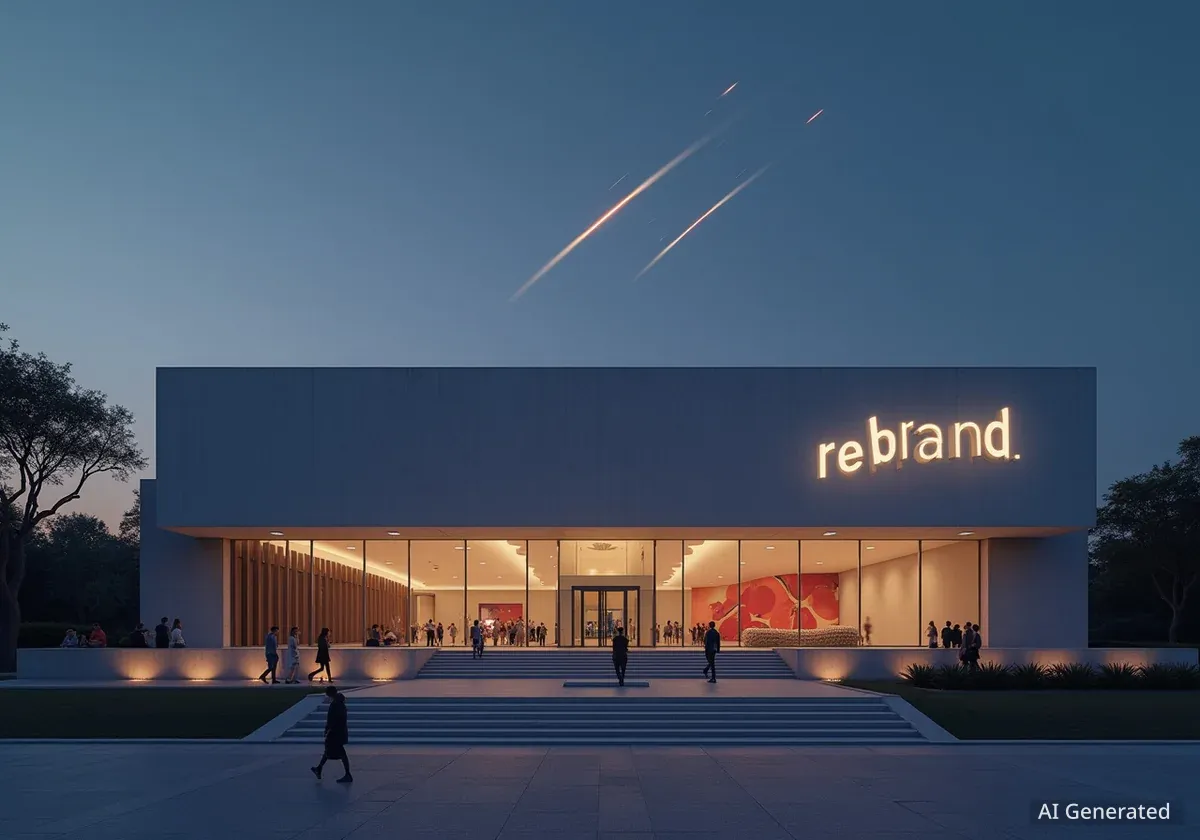In a striking display of activism, two homes in Topeka, Kansas, have been transformed into vibrant symbols of LGBTQ+ pride. These houses, painted in rainbow and trans pride flag colors, stand directly across from the Westboro Baptist Church, known for its anti-LGBTQ+ rhetoric. The initiative began with a purchase made sight unseen, driven by a desire for positive change.
Key Takeaways
- Aaron Jackson purchased a house in Topeka, Kansas, across from the Westboro Baptist Church.
- He painted the house in rainbow colors, naming it the Equality House, as a response to anti-LGBTQ+ messaging.
- Later, a second house was painted in trans pride flag colors.
- The homes have become tourist attractions and part of the Planting Peace nonprofit.
- This initiative highlights the broader concept of 'spite architecture' and its role in social commentary.
The Genesis of the Equality House
The story began with Aaron Jackson, then living in New York City. After Superstorm Sandy in 2012, Jackson, a self-described 'news junkie,' spent significant time online. During his internet explorations, he discovered the Westboro Baptist Church (WBC).
The Southern Poverty Law Center identifies the WBC as a hate group. It is widely recognized for picketing soldiers' funerals and displaying anti-LGBTQ+ slogans. Jackson's online research led him to a 'for sale' sign on a house near the church on Google Earth.
He found the idea of buying a house directly across from the church compelling. Although that specific property was no longer available, another house on the same street soon came up for sale. Jackson purchased it without ever seeing it in person.
Interesting Fact
Topeka, Kansas, has a population of approximately 125,000 residents. Its location along I-70, a major east-west highway, makes it a frequent stop for travelers across the United States.
A Bold Statement in Color
Upon moving to Topeka, Jackson immediately began his plan. He painted the exterior of his new home in bright rainbow stripes, mirroring the Pride flag. This act was a deliberate statement, designed for the social media age. It served as a direct visual response to the church's anti-gay rhetoric, positioned directly in front of their windows.
He named this vibrant property the Equality House. Photographs of the rainbow-colored home quickly went viral across various social media platforms. Jackson initially believed the attention would be fleeting, a momentary laugh before people moved on. However, something unexpected happened: people started visiting.
The Equality House quickly became a destination. Its location, just off I-70, made it an accessible stop for many road trippers. A few years later, Jackson acquired a second house on the street. This property he painted in pink, white, and blue stripes, representing the trans pride flag, further expanding his message.
"The Equality House is a symbol of compassion, peace, and positive change," Jackson's organization, Planting Peace, states on its website.
Beyond Spite: The Planting Peace Initiative
While many might label the Equality House a "spite house," Jackson views it differently. He considers it an "art project" and a symbol. The house is part of a larger nonprofit organization he founded called Planting Peace. This organization extends its efforts beyond Topeka, supporting various initiatives globally.
Planting Peace has launched projects such as orphanages and elephant rescue operations. The Equality House, despite its origins, serves as a prominent symbol for the organization's broader mission of promoting peace and equality. Its strategic location, however, continues to fuel the "spite house" debate among visitors and observers.
What is Hostile Architecture?
Hostile architecture refers to urban design elements that intentionally restrict specific behaviors, often targeting marginalized groups. Examples include uncomfortable benches designed to prevent homeless people from sleeping on them. Spite houses, while often targeting an individual, can be seen as a form of localized hostile architecture.
The History of Spite Architecture
Spite architecture has a long and colorful history, particularly in the United States. These structures are distinct from "nail houses," where owners refuse to sell to developers, often for financial reasons or stubbornness. Spite houses are built with the explicit intention to annoy a specific person or group.
One of the most famous examples is Boston's "Skinny House" at 44 Hull Street. This four-story, ten-foot-wide building in the historic North End reportedly originated from a feud between two brothers. One brother, returning from the Civil War, found his sibling had built a large home on their shared plot, leaving him a small, undesirable sliver. In response, he constructed the narrow house to block his brother's view and sunlight.
Today, the "Skinny House," also known as the "Spite House," is a popular tourist attraction, despite remaining a private residence. It sold for $1.25 million in 2021, highlighting that prime location can outweigh unusual dimensions and constant visitor attention.
Spite Houses Beyond America
While prevalent in the US, spite architecture is not exclusively an American phenomenon. Sarajevo, for instance, boasts the Inat Kuća, or "House of Resentment." In the 1800s, Austro-Hungarian authorities planned to demolish homes along the Miljacka River for a new city hall. One homeowner refused to sell. A compromise was reached: his house was meticulously disassembled, brick by brick, and rebuilt on the opposite river bank.
This structure now houses a traditional Bosnian restaurant, but locals still refer to it as the House of Spite. It stands as a symbol of resistance and Bosnian pride, a "David versus Goliath" moment in the city's history.
Small Spaces, Big Statements
Not all acts of architectural defiance require an entire house. In New York City's West Village, a tiny corner of pavement, measuring approximately 500 square inches, has become a tourist draw. This is the Hess Triangle, unofficially known as the "spite triangle."
Its origin lies in a dispute between the Hess family and the city in the early 1900s. The city seized much of the Hess family's land to build the subway. When a survey revealed a small two-foot sliver of land was missed, the family refused to relinquish it. Instead, they tiled their protest into the ground, stating: "PROPERTY OF THE HESS ESTATE WHICH HAS NEVER BEEN DEDICATED FOR PUBLIC PURPOSES."
The Hess Triangle made headlines in July 1922, with even The New York Times covering its appearance.
The Evolving Purpose of the Equality House
For Aaron Jackson, the viral attention surrounding the Equality House brought both benefits and challenges. He was pleased that the publicity raised awareness about the Westboro Baptist Church and promoted understanding of LGBTQ+ issues. However, the constant attention made living in the house day-to-day difficult.
Jackson is now converting the Equality House into a museum and library. This transformation will allow visitors to engage more deeply than just taking a photograph. Guests arrive with varying intentions; some wish to show support, while others come to debate. Some label it a spite house, while others see it as an activist experiment.
Jackson maintains an open perspective. "At the end of the day," he says, "it's an art project. I don't tell people how to feel." The Equality House continues to evolve, serving as a dynamic platform for dialogue and a beacon of colorful defiance.




